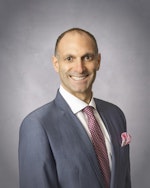Editor's note: Originally published November 3, 2021. Formatting updated 2024.
Although many studies have shown that dental implants have a greater than 90% survival rate over a 10-year period, complications can occur, and dental implant components can fail.1 An emergency phone call from a patient at the office or a message left with the office’s answering service stating that “the patient’s dental implant fell out” can be quite dramatic and anxiety-inducing. The problem is many implant patients do not quite know the exact implant components and often label any part of the implant-abutment complex as the “dental implant.” This clinical tip addresses how a dentist can make a quick clarification on which part actually fell out.
Related reading ... Failing dental implants: Ascertaining the etiology behind a sudden increase
Probability of dental implant component failure
Explain the different parts of the dental implant to the patient before and after treatment (figure 1).
The implant fixture or screw portion is what the dentist will assume fell out after an emergency patient phone call, even though the literature shows that the probability of exfoliation is around 2%–12% over a five-year period.2 A higher probability exists that the cover screw or healing abutment exfoliated—if the implant is not submerged—as opposed to the implant fixture. In addition, the probability of the abutment or abutment-crown complex unseating and exfoliating has been estimated to be 20%–59% over a 15-year period in function.3
Identify which part of the implant fell out
One way to help the dental patient correctly identify the implant part failure is to ask them to take a picture of the piece that fell out of their mouth and either text it to the office or request a teledental consultation. Many times, a healing cap or cover screw can fall out and be confused with a dental implant screw. Explain to the patient that replacing the cover screw or healing abutment back onto the implant is often an easy procedure involving simple removal of tissue.
If the dental abutment or crown has fallen off, the implant dentist must first evaluate the implant part to see if there is any damage to the material. The dental implant fixture that remains in the bone must also be evaluated to determine whether there is any damage to the platform and/or internal chamber. Then, an attempt should be made to identify the etiology of why the part fell out. Once again, placing the implant abutment or implant crown back into the mouth is usually not a difficult procedure if all other implant parts are intact.
More clinical tips:
- 5 causes of tooth pain after root canal therapy
- Implant malposition: A simple clinical technique for prevention
The dental implant fixture exfoliated
On rare occasions, the dental implant fixture can fall out (figure 2).
There are a variety of reasons as to why this happens, including:
- Acute bacterial infection
- Trauma
- Material failure
- Overload
- Peri-implantitis
- Lack of osseointegration
Typical treatment postexfoliation and prior to dental office visitation can consist of prescribing an antibiotic rinse and systemic antibiotics. The patient should be seen as soon as possible to evaluate the area and determine if grafting is necessary to prevent tissue collapse. A clinical exam and radiographs should be taken, and an occlusal analysis should be performed. In addition, a review of the patient’s medical, dental, and social history should take place in case anything was omitted or discovered since the first preoperative implant exam that could have led to dental implant failure.
Editor’s note: This article originally appeared in Perio-Implant Advisory, a chairside resource for dentists and hygienists that focuses on periodontal- and implant-related issues. Read more articles and subscribe to the newsletter.
References
- Howe MS, Keys W, Richards D. Long-term (10-year) dental implant survival: a systematic review and sensitivity meta-analysis. J Dent. 2019;84:9-21. doi:10.1016/j.jdent.2019.03.008
- Solderer A, Al-Jazrawi A, Sahrmann P, Jung R, Attin T, Schmidlin PR. Removal of failed dental implants revisited: questions and answers. Clin Exp Dent Res. 2019;5(6):712-724. doi:1002/cre2.234
- Jemt T. Single implants in the anterior maxilla after 15 years of follow-up: comparison with central implants in the edentulous maxilla. Int J Prosthodont. 2008;21(5):400-408.










